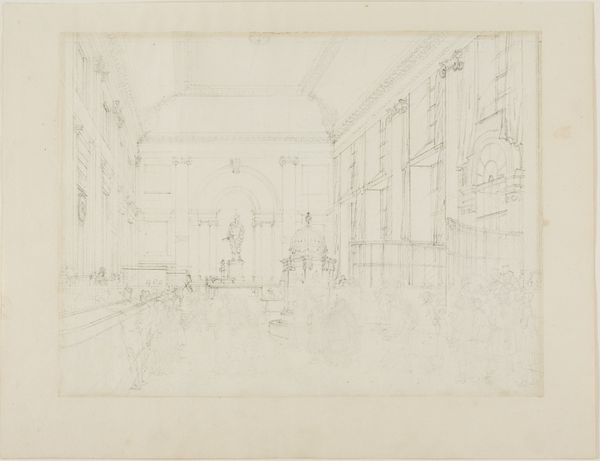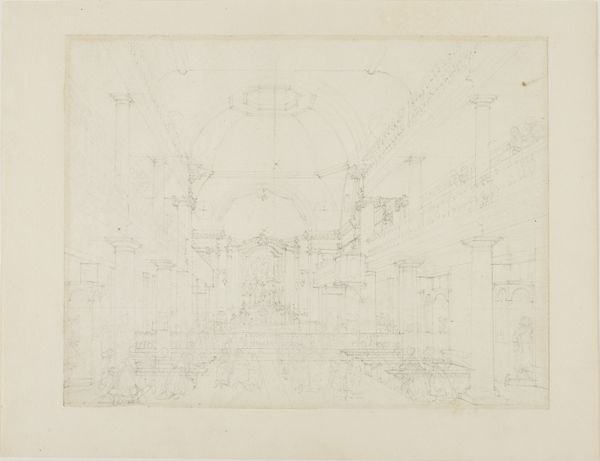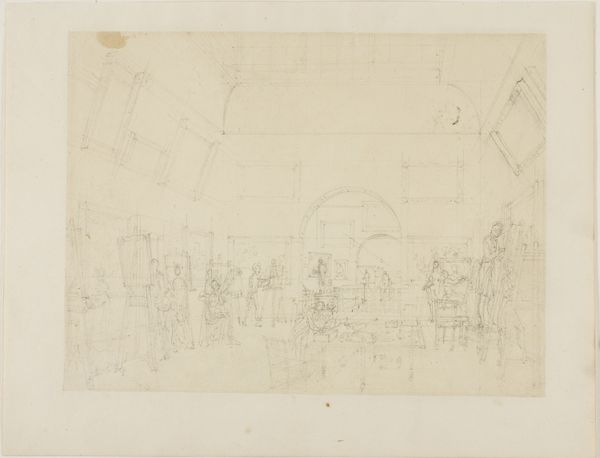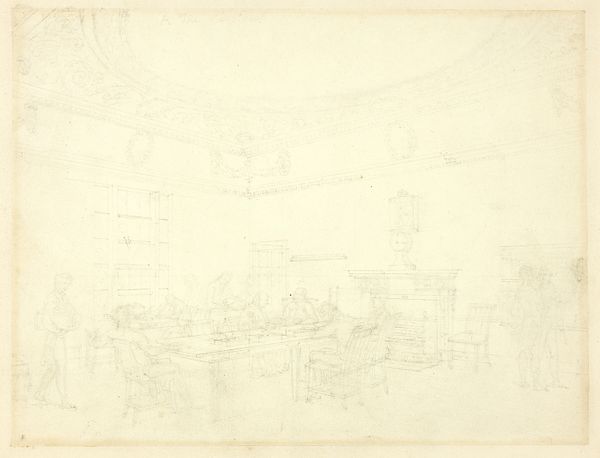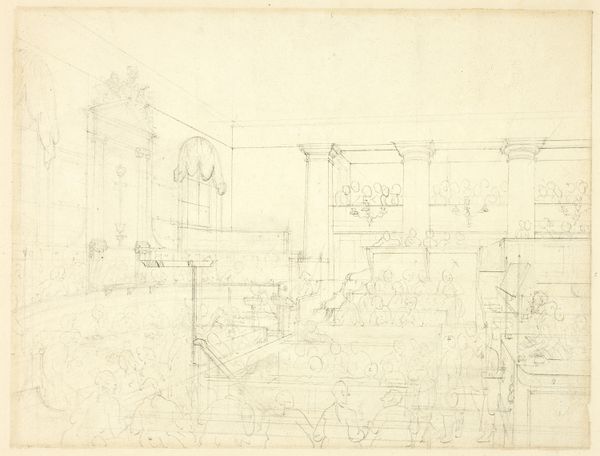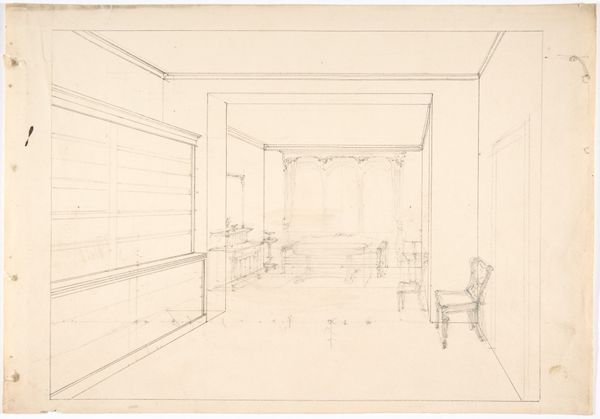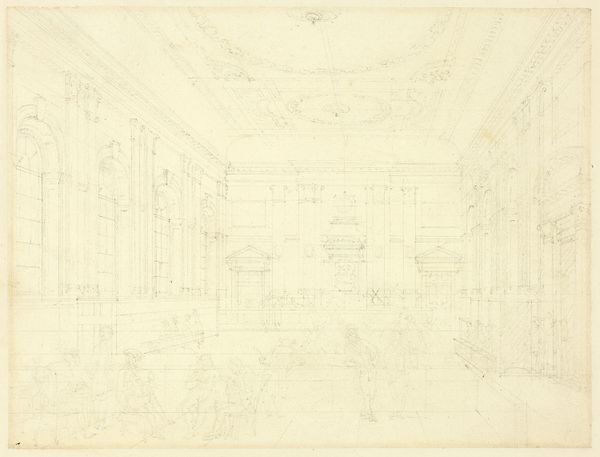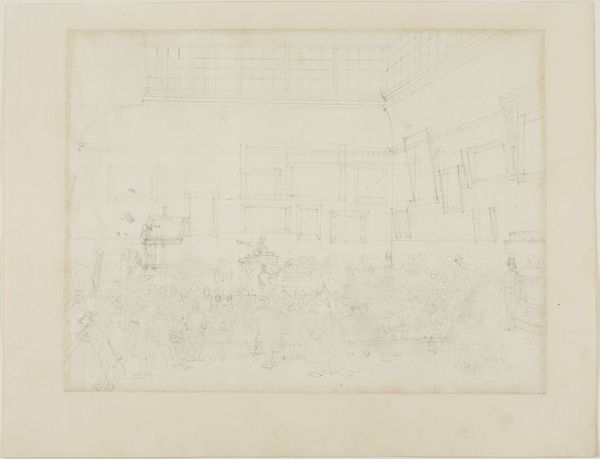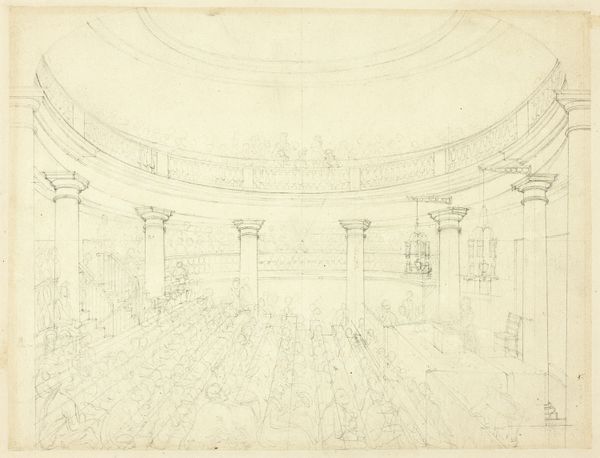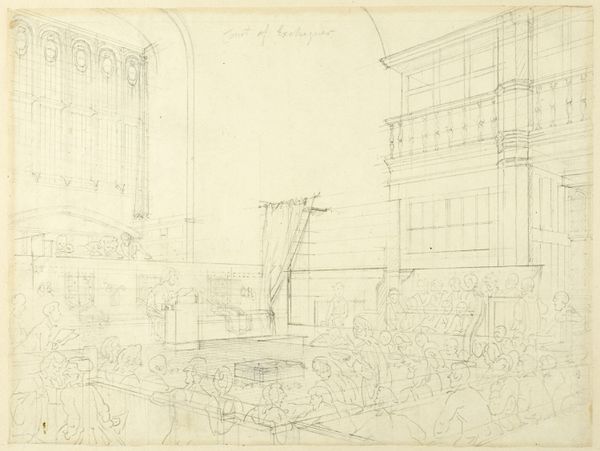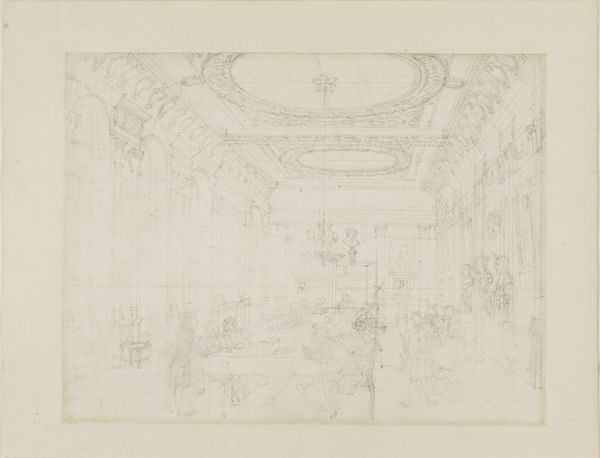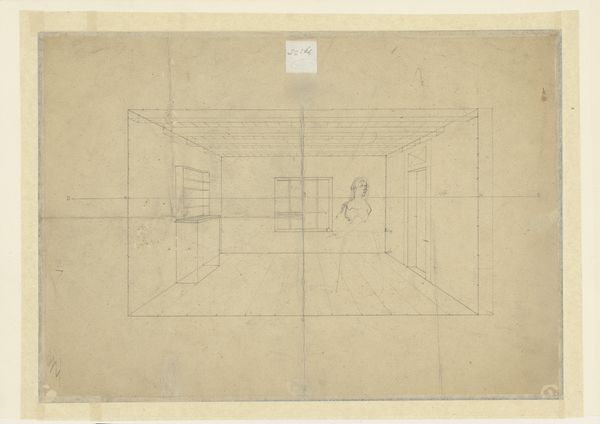
Study for Royal Institution, Albemarle Street, from Microcosm of London c. 1809
0:00
0:00
drawing, print, etching, paper, pencil, graphite
#
drawing
#
neoclassicism
# print
#
etching
#
etching
#
paper
#
england
#
pencil
#
line
#
graphite
#
cityscape
Dimensions: 197 × 259 mm
Copyright: Public Domain
Curator: This is Augustus Charles Pugin’s "Study for Royal Institution, Albemarle Street, from Microcosm of London," created around 1809 using pencil, graphite, etching, and paper. It currently resides here at the Art Institute of Chicago. Editor: Wow, it’s… ethereal. Like looking at a ghost of a room. All these faint lines create an airy, almost unfinished feeling. I keep imagining people floating just above the floor. Curator: Pugin, working within the Neoclassical style dominant in England at the time, meticulously documented the architectural and social spaces of London. This study offers us a glimpse into the Royal Institution, a hub for scientific learning and public lectures. The lines are fascinating as they offer views and lines of perspective all at once. Editor: A scientific hub? That gridwork suddenly makes so much more sense. It’s almost diagrammatic, the way the perspective is structured. Do you think that figure standing alone near the top, the person near the top, might be lecturing? I imagine everyone sitting around those tables taking furious notes. I like the anonymity here. Curator: Indeed. Consider this study in the context of England's class structure, though. The Royal Institution provided a space for the elites to engage with scientific ideas. But what about the working class? This space would be quite exclusive. We must ask ourselves what knowledges were being privileged. Editor: You know, now that you mention it, the sketch feels strangely devoid of… life. It's not just the lightness of the lines; the scene is active but so proper and orderly. It highlights a real separation, that it is meant only for very select and educated people, literally "above" others. Curator: Exactly. This drawing, seemingly innocuous, speaks volumes about access, power, and the social stratification inherent in spaces of learning and scientific progress of the time period. The question of who gets to learn, who decides what knowledge matters—it's all there in the sketch. Editor: I’ll never look at a pencil drawing quite the same way! To see all that in this image... amazing. Curator: Precisely. The artwork becomes an opening to a more expanded dialogue with our history.
Comments
No comments
Be the first to comment and join the conversation on the ultimate creative platform.
